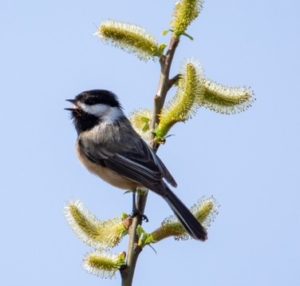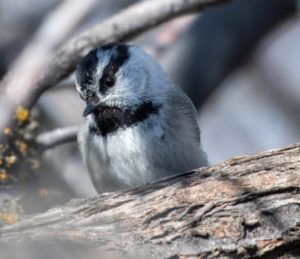text and photos by Louisa Evers
Editor’s note – Learn more about the Middleton River Park and its birds here. Access to the undeveloped park is from adjacent neighborhoods. Bird safely and respectfully.
Welcome to the second in a series of blogs about the birds of Middleton River Park. In this and the next two parts, I will talk about the songbirds and where to find them in the park. Not every one of these species sings. In ornithology (the study of birds) the term “songbirds” refers to those species that learn their songs – the oscines. There are also birds that are born with their songs – the suboscines – and usually these are very simple songs. I’ve also included some birds whose “song” is what many would name as a “call.” However, for simplicity, I’ll refer to all these birds as songbirds.
The main characteristic of these birds is they are usually found in trees and shrubs that provide food, shelter, and/or nesting. Different species use different parts of the trees and shrubs in different areas of the park.
Bird Families
The discussion covers general information about the different bird families found so far in Middleton River Park, then some information about the specific birds in each family, including a few species that haven’t shown up yet, but are likely to. The family descriptions are taken from David Sibley’s guide Sibley Birds West, second edition. I prepared this blog in mid-April so some of the possible migratory birds may appear by the end of the month or early May.
Identify Birds in the Field
Resources to help you identify birds include paper field guides and apps for smartphones. The two field guides I recommend are Sibley Birds West 2nd edition and the National Geographic Field Guide to the Birds of North American 7th edition. Both are sized to carry into the field in a large pocket.
Bird Songs on Your Phone
For smartphones, there are free apps and apps that cost. Of the free apps, the two best are Merlin, produced by the Cornell Lab of Ornithology, and the Audubon app. Merlin is designed to help you identify a bird by asking four simple questions, although I find that it’s hit and miss on correctly identifying the bird. However, under the Explore Birds section, you can search for a species, see several pictures, read a brief introduction, view a range map, and listen to songs and calls. Audubon also includes a process to identify a bird by asking you to characterize size, dominant color, general bird type, activity, habitat voice, wing shape, and tail shape. It also provides photos, calls, a range map, and more detailed information than Merlin as well as a link to recent sightings reported in eBird. Of the apps that cost, Sibley V2 and iBird PRO are probably the best. It can be helpful to have more than one app along with a field guide since the different apps provide somewhat different information.
Songbirds of Middleton River Park
Tyrant Flycatchers
Flycatchers are named for their habit of flying from a perch to catch insects in midair, known as sallying. Their flight is strong, buoyant, and agile with quick turns and abrupt movements. They perch upright while watching intently for prey. Most flycatchers are drab and difficult to tell apart; their song is the best way to identify most of them. Most are solitary birds except when breeding. Adults look very similar to each other. Only one flycatcher has been documented thus far at Middleton River Park, but at least three others may eventually be seen or heard.
Say’s Phoebe – Say’s phoebes are more distinctive than most flycatchers. They have gray backs, pale gray wings, pale rufous bellies, and a black tail. It is not clear that Middleton River Park provides good habitat for Say’s phoebes as they have only been documented once so far. It is possible the birds observed were passing through the area during migration. Say’s phoebes prefer expansive open areas and typically nest in crevices. While they will use farmland and playing fields, the key here is the size of the area. Keep an eye out for these birds next to the farm fields and in the open area in the middle of the park in case they reappear. Look for Say’s phoebes sallying out from tall shrubs and tall, sturdy forbs such as woolly mullein.
Willow flycatcher – this species has not yet arrived from its wintering grounds in central and south America. Look for them in shrubs along the Boise River. As drab birds, they look a lot like many other flycatchers and are best identified by their call – FITZ-bew.
Western Wood-Pewee – as with the willow flycatcher, the wood-pewees haven’t arrived yet, but should later in April or early May. Wood-pewees typically hunt from lower branches in taller trees. Look for them in the trees around the marshy areas and along Mill Slough. Their song is a burry nasal whistle DREE-yurr, breerrr, or brreeee.
Western Kingbird – Kingbirds are commonly seen in open areas with scattered trees of hedgerows and often perch on overhead powerlines. It’s another migrant that hasn’t shown up yet but may use the open areas in the middle of the park. The western kingbird has a distinctive light gray head, neck, and breast, dark wings, pale yellow belly, and black tail with white outer tail feathers.
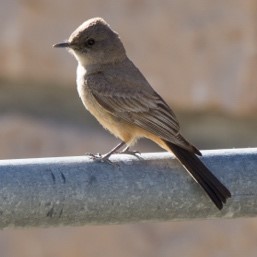
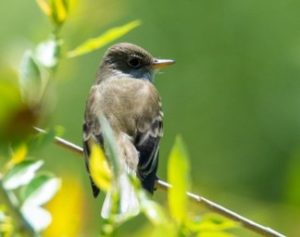
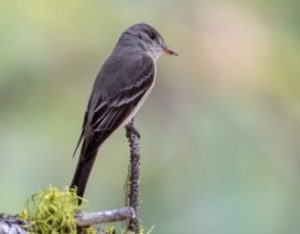
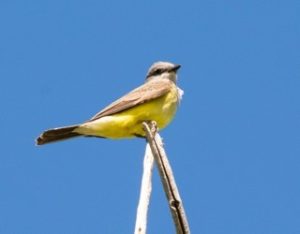
Vireos
Vireos are small, somewhat stocky songbirds with stout hooked bills and short, strong legs. Another drab group of birds, but all species have either an eye stripe or “spectacles” around the eyes. They are usually solitary or in pairs. Vireos feed on insects and larvae gleaned from leaves and berries. Vireos are migratory. At least one species may nest within the park boundaries while another species may be seen passing through the park as it heads for its breeding areas further north.
Cassin’s Vireo – This vireo may be seen as it migrates through the Treasure Valley in spring and fall. They use low shrubs during migration, so the best place to look for them is near the Boise River and around the marshy area. These are generally gray birds with strong white spectacles and white breasts and bellies.
Warbling Vireo – Warbling vireos like well-spaced large trees near water and have been documented nesting elsewhere along the Boise River. These gray birds have a white stripe above the eye and a smaller, less conspicuous whitish patch below the eye, white throat, and yellowish sides. Look for them around the marshy area, along Mill Slough, and where the taller trees are located along the Boise River.
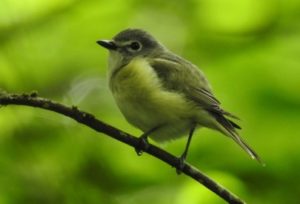
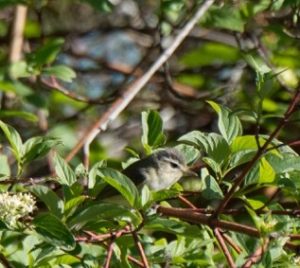
Jays, Crows and Allies
This family of birds are generally large, sturdy songbirds with thick bills, strong legs, and loud voices. All species are rather social and usually travel in groups and will mob predators such as hawks and owls. However, they can be surprisingly inconspicuous when nesting. Most are omnivorous, eating pretty much anything.
Black-billed Magpie – Magpies are present year-round, and their globular nests are relatively common in the park. Look for magpies throughout the park. They nest in larger shrubs and shorter, wide-spreading trees. These are large, bold black, white and blue birds with long tails.
American Crow – Crows are the large black birds seen flying around, near, and through the park. Crows are usually in small groups in summer and but quite large groups in winter. Crows can be distinguished from ravens by their higher-pitched caws, smaller bill, and squarish tail. When they glide, their wings are usually slightly raised. In contrast, ravens are larger with heavier bills and wedge-shaped tails; ravens hold their wings flat when gliding. While ravens occur in the area, they are usually not common in towns.
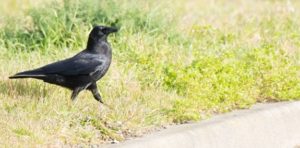
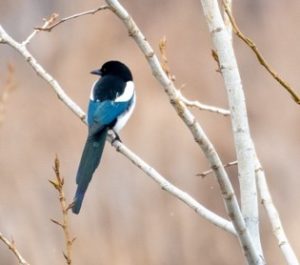
Chickadees
Chickadees are small songbirds that often form mixed-species flocks in winter. They are very active birds that move nervously and acrobatically as they search the vegetation for food. Chickadees frequent bird feeders that have black oil sunflower seeds or suet. One species is found year-round in the park and another may visit the park in winter, although it was not seen this winter.
Black-capped Chickadee – Black-capped chickadees are common in the park year-round. These are small gray birds with a black cap, black throat, and white face. Their sides may be grayish or somewhat rufous. They have long tails and often look like they have no neck. Chickadees typically fly only short distances between trees. While they are most common in trees, they will also glean for insects and larvae in shrubs. The chick-a-dee-dee-dee call is their most commonly heard sound. Their mating and territorial song is a pure, whistled feebee or Hey sweet-ie.
Mountain Chickadee – The occasional mountain chickadee may be seen in winter, usually as a single bird or pair of birds mixed with black-capped chickadees. Mountain chickadees are similar in appearance to black-capped chickadees but have a white stripe over the eye and are plain gray in their wings and undersides. Their call is like the black-capped chickadee but slightly harsher, slower, and descending.
